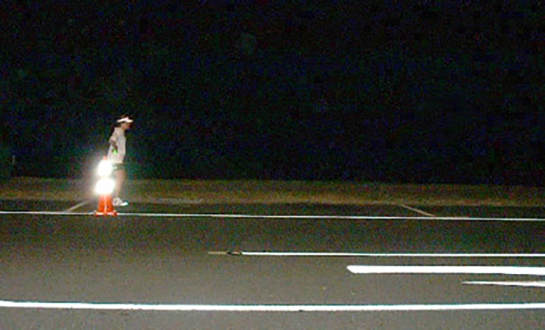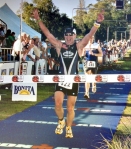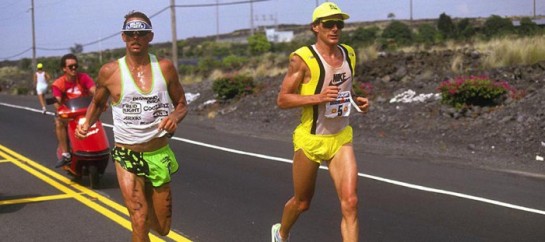By Tom Demerly for tomdemerly.com.

There’s no politically correct way to express this, but, yeah… ahhh. I feel a little out of place.
I’m a 56-year old conspicuously Caucasian guy in the crowd-packed center of the massive Mexicantown Cinco de Mayo street celebration late on a hot May afternoon in Detroit.
There’s heavy ganja haze in the air. It’s thick enough for a contact buzz. I’m carrying a huge U.S. flag in my hand, and feeling like I’m not particularly understood or appreciated here. Other than the double file line of about 50 quasi-military, tacticool, mostly white guys and girls with a distinctly law-enforcement look that are behind me, I feel pretty isolated. And pretty conspicuous with my flag and backpack as we navigate the tightly packed downtown party crowd of tens of thousands. There is almost no room on sidewalks, the streets are bumper to bumper and packed with crowds. And smoke.
We’re doing GORUCK Light Detroit 2018.
In the evolution of participation sports GORUCK events have emerged. With approximately 500 events scheduled in 2018, GORUCK challenges are huge now. Today I’m in my first one. I’m wondering if it’s coming slightly off the rails.
GORUCK Light is a team endurance event that includes military style calisthenics, running and a lot of walking or “rucking” between 8 and 12 miles in group formation while you wear a weighted backpack. Think basic military training, then add your new constant companion, a 10- 40-pound weighted backpack that makes everything that would have been easy for a reasonably fit person, a good bit tougher.
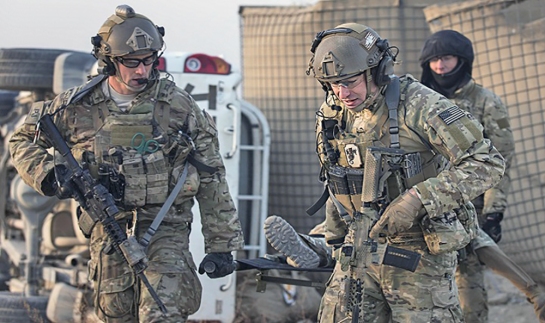
GORUCK events are inspired by contingency training for military special operations units.
Jason McCarthy, a fit, chiseled, dark- haired guy with that bolt upright posture that screams former military, founded the GORUCK brand in 2008. There are a lot of remarkable things about GORUCK, but the single most remarkable thing is its growth. In only ten years GORUCK has become huge.
McCarthy founded GORUCK while still in U.S. Army Special Forces and deployed in the Middle East during the Global War on Terror (GWOT). He made an emergency survival and evacuation “Go Bag” backpack for his wife who served in the Foreign Service. If there was a coup d’état, an IED attack, or any other threat in one of the most dangerous places on earth, Jason’s wife Emily could grab her “Go-Ruck” and evacuate with the essentials of food, water, additional clothing and rudimentary survival gear.
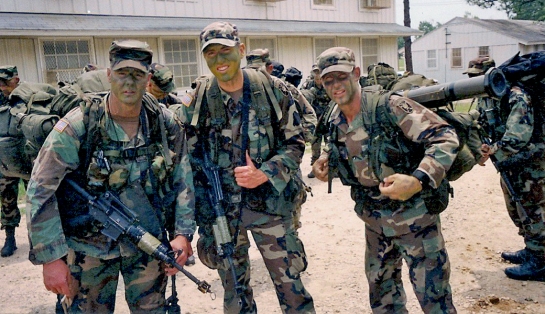
GORUCK founder Jason McCarthy (center), a former member of U.S. Army Special Forces.
Without knowing it, McCarthy had conglomerated an idea that had been around for a long time into a saleable brand, then began to parlay that brand into an image, an event and even a lifestyle.
GORUCK could have become just another military backpack brand, and in the wake of the 9/11, there are a lot of them. But Jason McCarthy also built something else along with his simple, sturdy, square, tech-free backpacks. He built a vibe.
The GORUCK vibe is a learned responsibility. It’s isn’t politically yawed, it’s not a “movement”. It’s an insight and acceptance of the real world in accelerated change. A change that in the post-9/11, Arab Spring and polarized U.S. political world can just as easily come off the rails as it can evolve into a new unified world. Either way it goes, the GORUCK ethos is adaptable. And capable.
Most participant endurance sports are compensation. Compensation for a sterile life lived too easily, too slowly, too conveniently. Our culture has become overweight and underprepared. If most Americans got a flat tire in a rural setting and had to walk six miles in hot weather to find a tow truck they would be in deep trouble, especially if their smart phone battery died. GORUCK Light acknowledges that. So, you train for the “real world” and gain some functional fitness and endurance while meeting friends and re-connecting with how to cooperate on a team. GORUCK events are no different in terms of compensating. They offer a “synthetic” or contrived set of discretionary challenges. But much of what you learn and practice at GORUCK is practical, and it may come in handy if you are ever have to walk your way to safety, or even make a connecting flight across the airport after the shuttle has left.
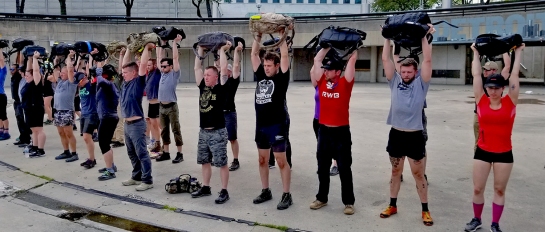
GORUCK Light Detroit on Saturday, May 5, 2018 in Hart Plaza.
In December, 2016 CNN reported that, “Karen Klein, 46, was headed to the Grand Canyon National Park with her husband Eric and their 10-year-old son. State Road 67, which leads to the canyon’s north rim, is closed for the winter and their car’s GPS detoured them through forest service roads.” Klein was stranded in her car and forced to endure a brutal, freezing 26-mile solo hike for 30 hours. CNN reported she, “Subsisted on twigs and drinking her own urine, to get help.”
In December, 2006 Daryl Blake Jane was stranded in snow in his Jeep Cherokee on a remote U.S. Forest Service road west of Mount Adams, Washington. He was forced to survive in his vehicle, in the depth of winter, for nearly two weeks.
In between these instances there have been many more when people had to rely on basic fitness and skills to survive. This isn’t the fringe “prepper” or “survivalist” mindset. This is basic responsibility for your own life and the people around you. GORUCK teaches and tests that responsibility.
Different from the vibe of Ironman triathlons with their finisher photos and individual stories, GORUCK is about the group. It’s about cooperation, teamwork, unity and acceptance. It is about admitting your shortcomings and about doing more than your share while not expecting an extra pat on the back. It’s about carrying someone else’s ruck when the going gets tough, and having them carry yours. Everyone has a bad moment in GORUCK. There are no solo finisher photos in front a branded banner, no medal around your neck. You get a Velcro patch for making it as a team for the hook and loop section of your GORUCK. Every tribe has its icons.

GORUCK events include a community service component where participants have to plan and execute a project that benefits the community. Every participant is required to play a role in the community service project. Our event participants collected food and clothing for homeless people in Detroit and raised cash donations for shelters.
GORUCK events vary in intensity from the GORUCK Light, the easiest and shortest introductory event, to the difficult long distance, non-stop GORUCK events like GORUCK Tough and GORUCK Heavy. GORUCK also provides practical skill training events.
The GORUCK events mesh well with the Crossfit, veteran, law enforcement, emergency services crowd but don’t have an exclusive mindset. This is about teamwork, integration, doing more than your share and accepting help when you inevitably have a weak moment. And everyone has a weak moment sooner or later. But the sum of the parts is greater than the whole, and that is one of the lessons of GORUCK. Two is one, one is none, and synergy gets everyone to the finish as a group. In GORUCK, you are never more than an arm’s length from a teammate. Stray too far, and you are doing another combination of push-ups, bear crawls or eight-count body builders. You don’t even go the bathroom in a GORUCK event by yourself.
We’re through Mexicantown now in full Cinco de Mayo swing. Now we’re making our way at a fast trot along Vernor Highway, underneath the iconic Detroit ruins of the Michigan Central Train Depot. We hump our packs up from underneath the train tracks and through Roosevelt Park where we pose for a group photo. From there it is double-time east on Michigan Ave. as we enter the final miles of the event at a fast clip.

Our team carries a simulated casualty on an improvised litter in the final miles of the event.
But one man goes down from heat, dehydration and the workload of moving fast with a heavy pack. Our “cadre”, the instructor/administrators of a GORUCK event, show us how to rig an expedient casualty litter from an eight-foot section of 1” tubular nylon climbing webbing. In only minutes, we have the “casualty’s” ruck off, I wear it on my chest with my ruck on my back, and we continue east at combat speed on Michigan Ave. You never know the distance or course in GORUCK. We may have another three miles to go, or another five. We may have to climb four parking structures, or one. We may have to cross open waterways (the GORUCK Light event earlier in the day in Detroit was in the Detroit River four times). Not knowing the course or distance is a component of the event.
Finally, we reach Washington Blvd. and take a right, still moving fast, still carrying our “casualty”, a roughly 230-pound lad who is finding out that riding in a field-expedient improvised litter isn’t much more comfortable than humping a 40-pound ruck. Everyone is out of water. There are no aid stations in GORUCK. No support. No mile markers. No course map before the event. Like selection for the most elite special forces units you never know when the instructors will stop the “class”, circle you around, and declare “ENDEX” or “end of exercise”.
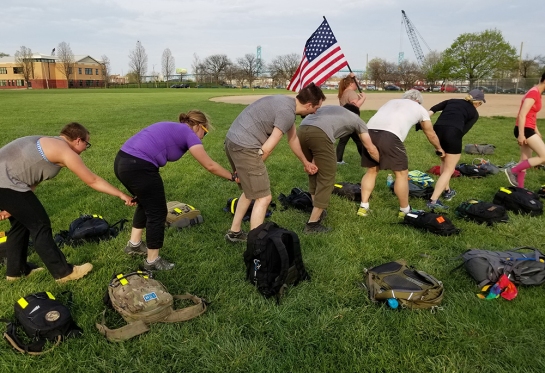
The GORUCK baby elephant walk.
One of our scouts veers off into a parking structure two blocks from the Detroit River. It’s dark now and I wasn’t looking forward to figuring out how to move our “casualty”, our rucks and ourselves through the dark water of the Detroit River as the air cools way off. So, I’m glad when our team hits the stairs and begins to run up eight flights to the roof of the parking garage. I’m glad until I realize I am at the front of the group running up flights of stairs wearing two 35 pound rucks. By the fifth floor I am destroyed. Three to go.
At the top of the parking garage our instructors “Wild Will” and “DS”, one a former U.S. Air Force Special Operations Combat Controller, the other a former U.S. Marine Corps Special Operations member, both with combat tours in Iraq and Afghanistan, circle us around. What now? When does this thing end?
Wild Will unzips one of the team weights we have been carrying over the last 8 or nine miles, a massive and awkward cordura duffel, and produces a can of Dos Equis. We’ve learned a lot today at GORUCK Light Detroit, and perhaps the best lesson is that, whether it is in a big party crowd in Mexicantown on Cinco de Mayo or carrying your new buddy in an improvised litter down Michigan Ave in Detroit, GORUCK Light brings people together. Then we hear those magic words:
“ENDEX! You made it.”
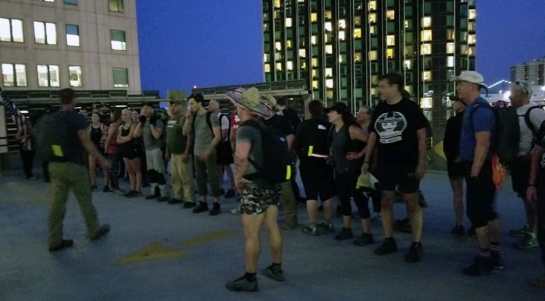
GORUCK Light Detroit 2018 ENDEX, “End of Exercise.
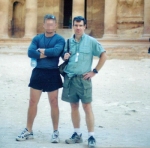
Author Tom Demerly is a former member of a U.S. Army National Guard Long Range Surveillance Team (LRS) and Company Honor Graduate from the U.S. Army Infantry School at Fort Benning, Georgia. He has raced endurance events on all seven continents including Antarctica and completed over 200 triathlons including the Ironman Triathlon World Championships in Kona. Hawaii. His articles have been published in Outside, Business Insider,Velo-News, Bicycle Guide, Bicycling, Inside Triathlon, Triathlete, Triathlon Today!, USA Triathlon Magazine and many other publications around the world.
SaveSave
SaveSave
SaveSave
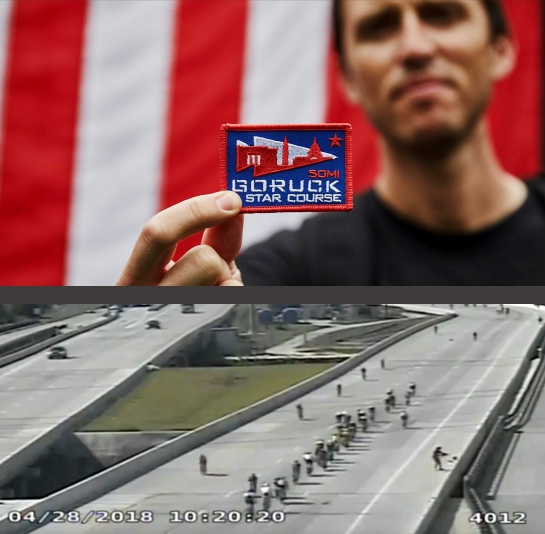
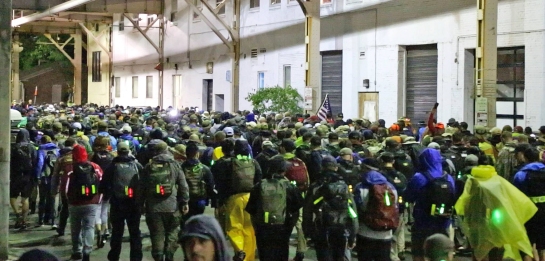
 Author Tom Demerly training for the upcoming GORUCK Star Challenge 50-Miler in Cincinatti, Ohio. Demerly is a former member of a U.S. Army National Guard Long Range Surveillance Team (LRS) and Company Honor Graduate from the U.S. Army Infantry School at Fort Benning, Georgia. He has raced endurance events on all seven continents including Antarctica and completed over 200 triathlons including the Ironman Triathlon World Championships in Kona. Hawaii. His articles have been published in Outside, Business Insider,Velo-News, Bicycle Guide, Bicycling, Inside Triathlon, Triathlete, Triathlon Today!, USA Triathlon Magazine and many other publications around the world.
Author Tom Demerly training for the upcoming GORUCK Star Challenge 50-Miler in Cincinatti, Ohio. Demerly is a former member of a U.S. Army National Guard Long Range Surveillance Team (LRS) and Company Honor Graduate from the U.S. Army Infantry School at Fort Benning, Georgia. He has raced endurance events on all seven continents including Antarctica and completed over 200 triathlons including the Ironman Triathlon World Championships in Kona. Hawaii. His articles have been published in Outside, Business Insider,Velo-News, Bicycle Guide, Bicycling, Inside Triathlon, Triathlete, Triathlon Today!, USA Triathlon Magazine and many other publications around the world.








